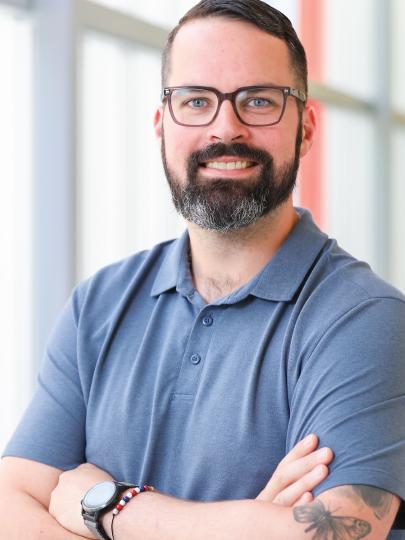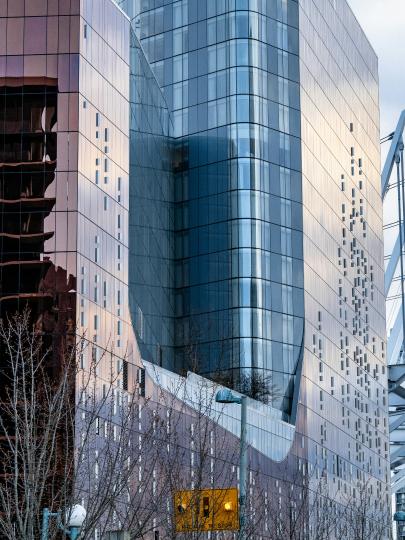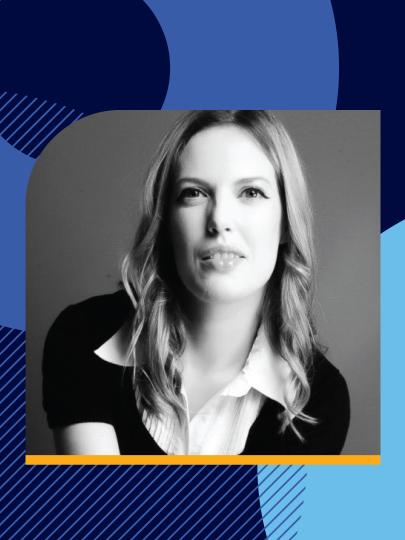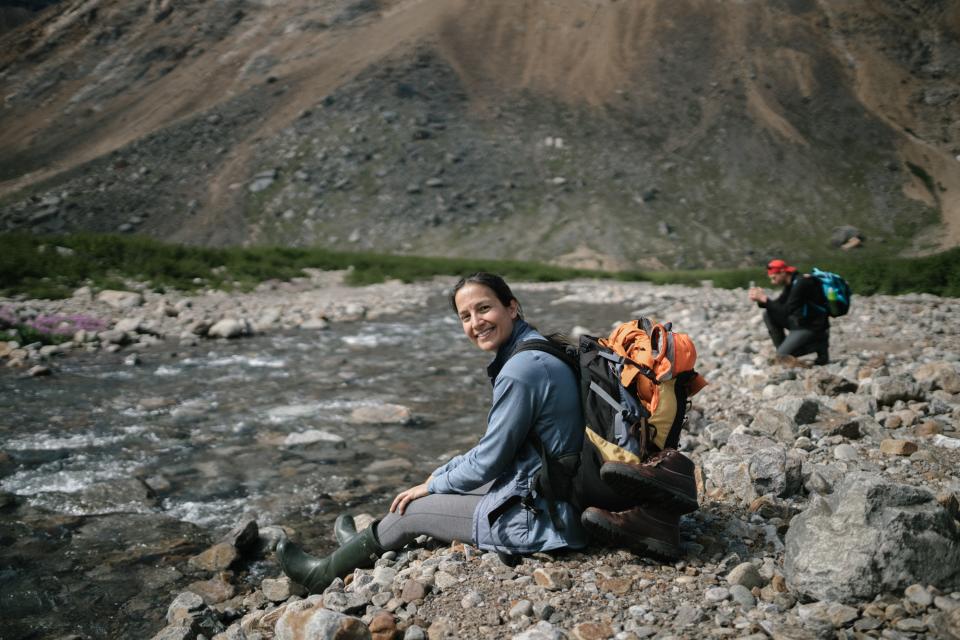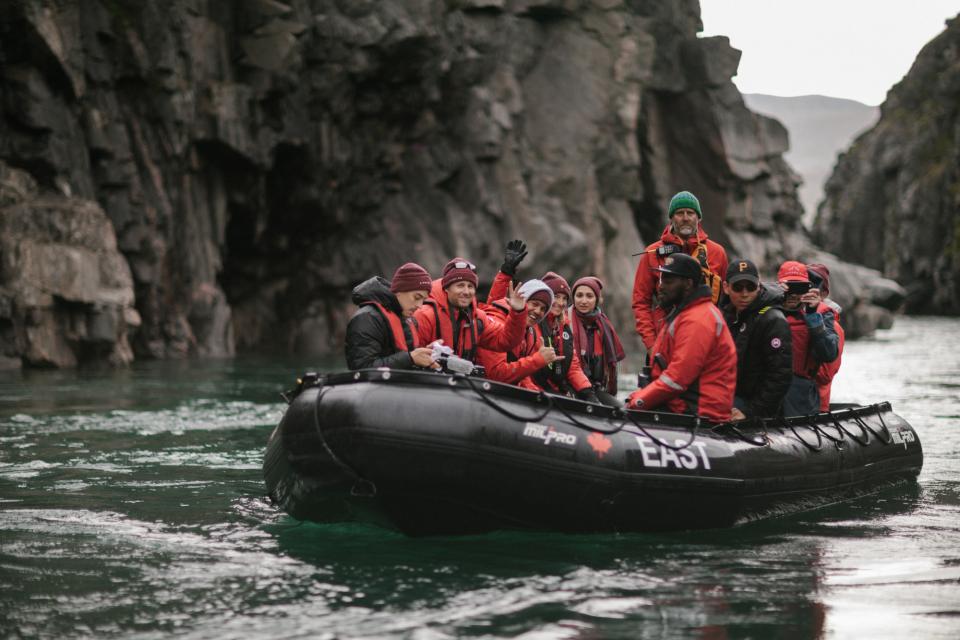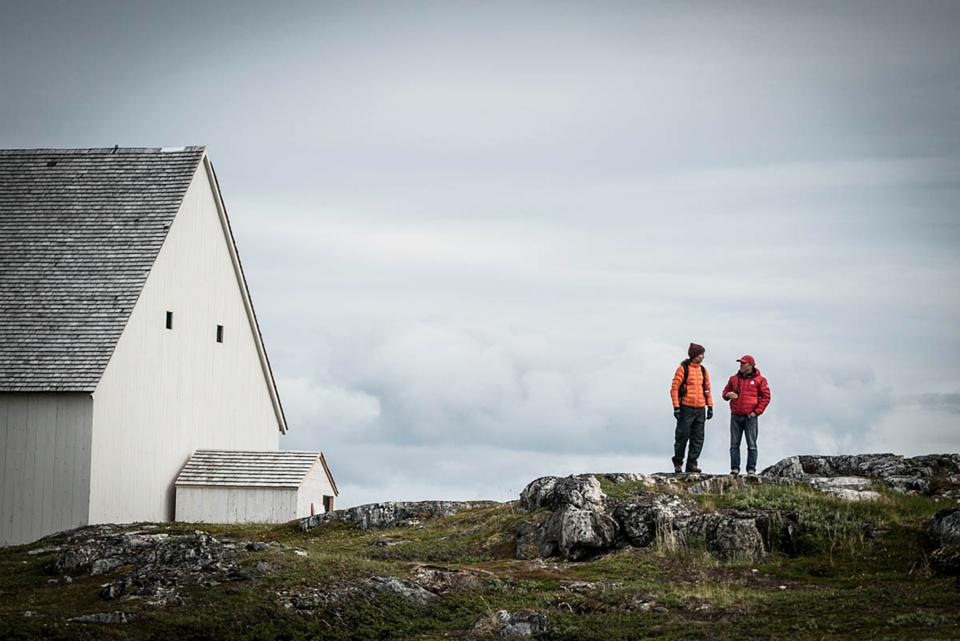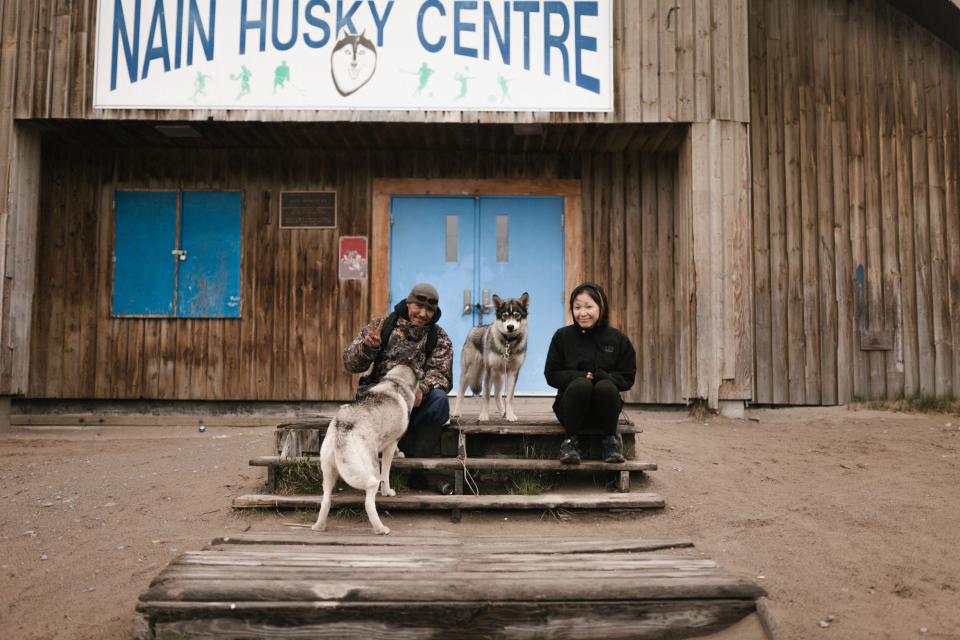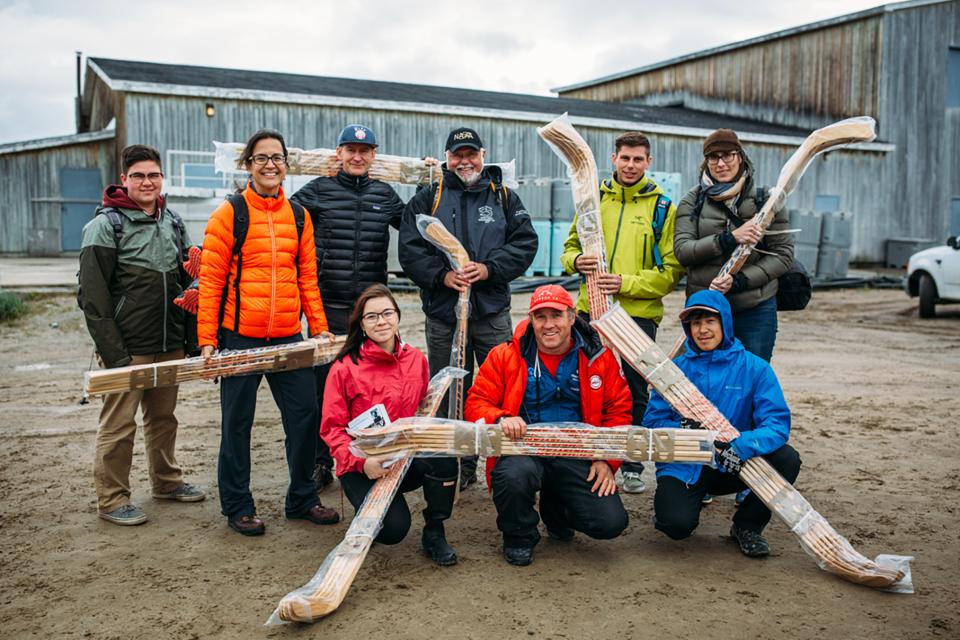Reconciliation, One Story at a Time
On June 1, the icebreaker Polar Prince set sail from Toronto on a 150-day journey to Victoria. It traversed all three Canadian coasts on a 23,000 km route that included navigation of the Northwest Passage. The epic adventure was a signature project of Canada 150 and aimed to engage millions of Canadians in national discussions centered around four key themes: reconciliation, diversity and inclusion, the environment, and youth engagement. Three hundred lucky Canadians were selected to fill a passenger list representing a cross-section of our society. It included scientists, artists, musicians, Indigenous elders, historians, politicians, business leaders, youth, newcomers, journalists, celebrities, and teachers. Each passenger was assigned to one of 15 legs of the journey, during which they enjoyed community events and cultural activities, both on board and via shore excursions. Alumnus Trevor Corkum was writer-in-residence for Leg 6 of the route, a week’s sailing from Nain in Newfoundland and Labrador to Iqaluit in Nunavut. One of his shipmates was alumna Nadine Caron, MD’97.
I first met Nadine on the streets of Kuujjuaq in northern Quebec. Our plane had left Montreal two hours earlier and dropped our Leg 6 group off at Kuujjuaq Airport. On the descent, circling down, thick boreal forest rose up to meet us, punctured here and there by sombre grey lakes. As there were delays in boarding the chartered plane to Labrador, our group decided to take a walk through town.
Kuujjuaq is the administrative capital of Nunavik, the Inuit homeland of Quebec. As the heart of Nunavik, it was a fitting entry point for our journey north. Like many northern communities, Kuujjuaq is a sprawling town, houses spiralling around dusty, unpaved roads, hemmed in by the harsh beauty of rocky hills. Snug in our puffy coats – even though it was late July – Nadine and I lagged behind the rest of the group, lost in conversation.
I remember we spoke at length about books. She recommended The Truth About Stories by Thomas King, and I told her how I’d loved Madeleine Thien’s Do Not Say We Have Nothing. She spoke about her daughter, husband, and their life in Prince George. I talked about my partner. When I asked about work, she told me she was a doctor. We soon fell into a comfortable silence, watching kids at the community centre play pick-up ball.
It was only later, after the group boarded the ship and formal introductions were made, that I realized Nadine was Nadine Caron, co-director of UBC’s Centre for Excellence in Indigenous Health and Canada’s first female Indigenous surgeon. Turns out I had even seen her before on TV, in a moving one-on-one interview with Peter Mansbridge.
But I knew her first as simply Nadine. Engaged conversationalist. Voracious reader.
We were an eclectic group of 25 Canadians that included a Yukon Supreme Court justice, a ceramic artist, a Conservative MP, a comedian, and an advocate for those with Down syndrome. We departed Nain, Labrador, on a retired Coast Guard icebreaker, the Polar Prince, which powered its way alongside the spellbinding Torngat Mountains en route to Iqaluit.
A typical day would see us boarding a flotilla of Zodiacs to zoom ashore for a community or cultural event, like learning to cook Arctic char with Inuit elders. Days were full and emotions high. In the evening, we’d gather to debrief. Stories were shared, themes engaged, and sometimes, in the intimacy of those late hours, wounds and private memories revealed.
It was hard not to be moved while travelling through Nunatsiavut, the magical homeland of the Labrador Inuit. Or when meeting with Inuit youth who are reshaping the world’s understanding of their people through activism and story. Or connecting with elders like Sophie Keelan and John Jararuse, whose lives had been turned upside down when Inuit living in the village of Hebron, where a mission had been established in the 1830s by the Moravian church, were forced to relocate in 1959, after the Newfoundland government halted service. Disaster ensued as families were split apart, the Inuit scattering to unfamiliar communities in the south.
One of the most powerful moments on our journey was a ceremony in the refurbished church in Hebron. On long wooden benches, we listened to Sophie and John sing an Inuktitut hymn before sharing memories of their childhoods in Hebron, full of love and family and time on the land. Sophie and John’s tales were stories of resilience; their connection to and love of the land unbroken, despite the hardships they’d endured.
Hebron is a recognized historic site now, part of the Torngat Mountains National Park, co-managed by the Inuit and Parks Canada. Sophie and John were gracious hosts, welcoming us to their territory, preparing a traditional meal of bannock and Arctic char and inviting us to walk the trails where the Inuit have lived, hunted, and died for thousands of years. Their generosity, humility, and infectious laughter were highlights of the trip.
The Gord Downie and Chanie Wenjack Legacy Room on the ship is designed as a safe space to discuss reconciliation. The Legacy Room idea was conceived by Nova Scotia Assembly of First Nations Regional Chief Morley Googoo, who partnered with the Gord Downie & Chanie Wenjack Fund. There are a growing number of Legacy Rooms across the country, spaces where Canadians can gather to reflect on the calls to action of the Truth and Reconciliation Commission’s final report.
It was in the Legacy Room that some of our group’s most powerful conversations occurred. Conversations like Nadine’s story of her mother’s time at a residential school in Ontario, how upon entering the school her mother was given the designation Number Forty – stripped of everything from her name to the culture and language she was forced to leave.
"Laughter is a form of resilience for many Indigenous communities,” she explained. “It means that we survived. It means that we’re still laughing. It means that we’re still here." ~ Nadine Caron
“What I started to notice about the Legacy Room was that it garnered a level of respect on the ship,” said Nadine on later reflection. “It was supposed to be the quiet space, and it was. We had some very challenging, very eye-opening conversations together. Yet there was also a lot of laughter.”
She told me about how her mother, attending a reunion at her former residential school, ended up laughing on the front step with her sister, an hour after breaking down with grief.
“Laughter is a form of resilience for many Indigenous communities,” she explained. “It means that we survived. It means that we’re still laughing. It means that we’re still here.”
Idealists among us believe we’re navigating a critical moment in Canada’s history, at long last beginning to incorporate some of the vital stories missing from the official narratives of our country. Recognizing Canada’s historical mistreatment of Indigenous peoples, the wrongs done to Inuit, First Nations, and Métis communities, is an urgent first step.
Not long after our return from the trip, I asked Nadine what reconciliation looks like from her perspective.
“In order to reconcile something, you have to recognize and accept the past with the present,” was her response. “You need to start from a place of respect. If you’re proud that Canada does well in hockey, or that we have a democracy, or whatever it is that makes you proud to be a Canadian, you have to be able to take that and also look at the past.” In other words, being part of our country carries a responsibility to bear the full weight of our collective history, in all its joy and accomplishment, but its darker chapters too.
Moving forward, she says it’s the duty of all Canadians to apply the spirit of the Truth and Reconciliation Commission’s Calls to Action in their day-to-day lives.
“Figure out what that might mean to you personally. How are you going to take those calls to action, interpret them through the lens of your own profession and do something to be part of the change we need? If you are a health care practitioner, how can you address your care of Indigenous Canadians through that lens? And if there’s something you don’t understand, it’s your responsibility to ask. It’s everyone’s responsibility.”
She sees the icebreaker Polar Prince as an apt metaphor for Canada powering its way into the future. “By seeing where we’ve come from, by knowing where we’ve been, we are better able to redirect the country to where we’d like it to be in the future.”
ABOUT CANADA C3
Trevor Corkum is a Toronto-based writer and educator. His novel The Electric Boy is forthcoming with Doubleday Canada.
Nadine Caron is an associate professor in the Department of Surgery in UBC’s Faculty of Medicine, and was appointed co‑director of the university’s Centre for Excellence in Indigenous Health in 2014.


